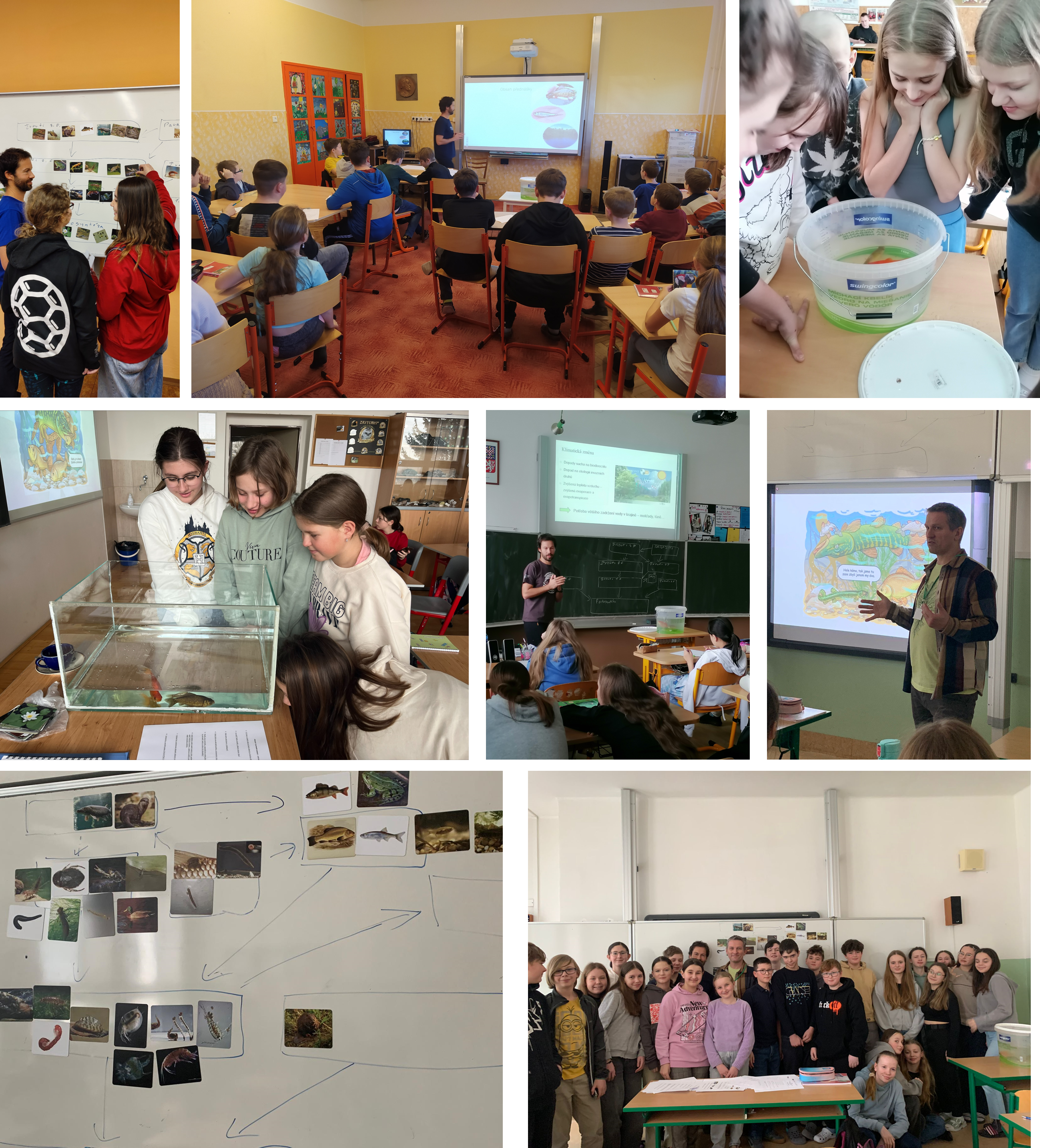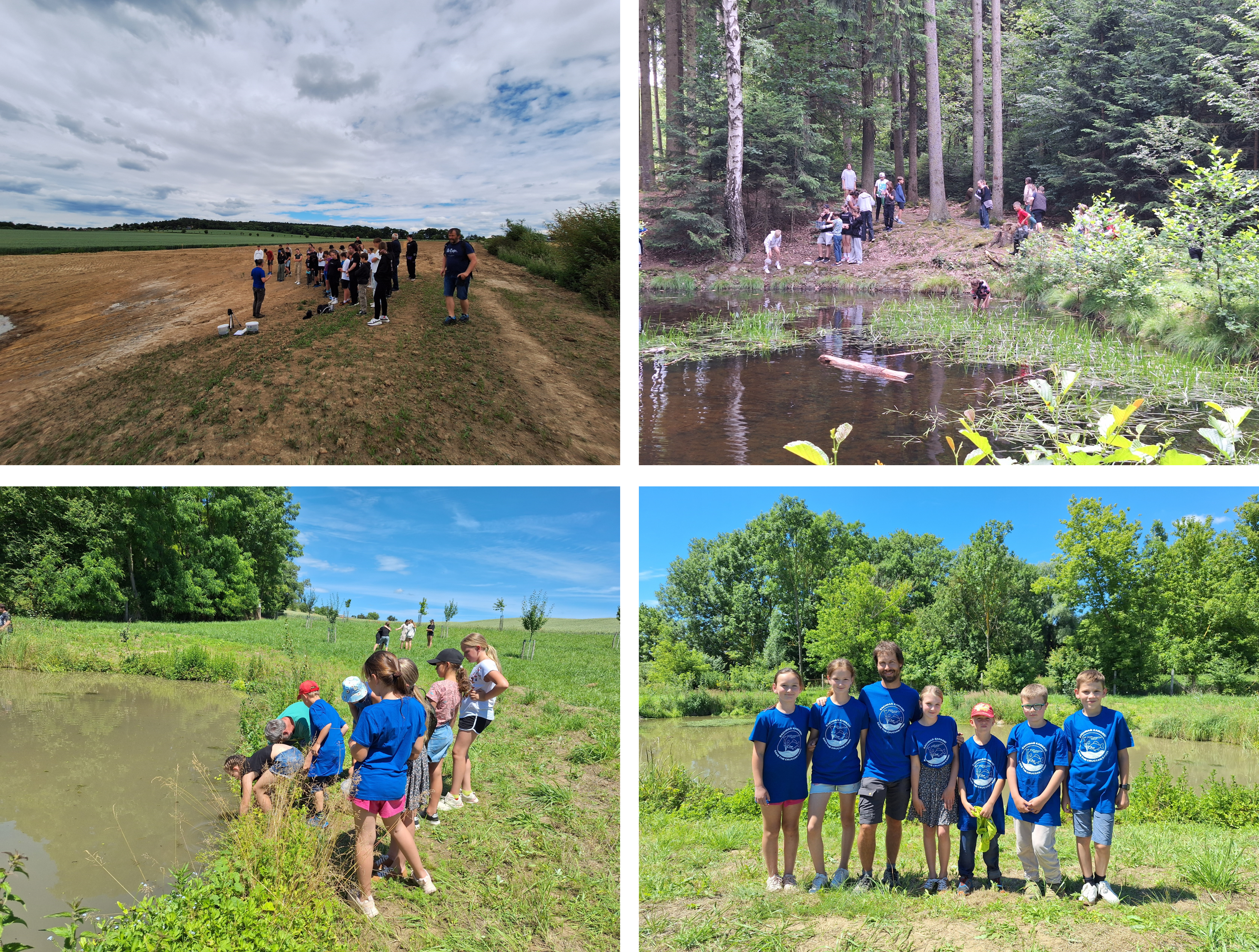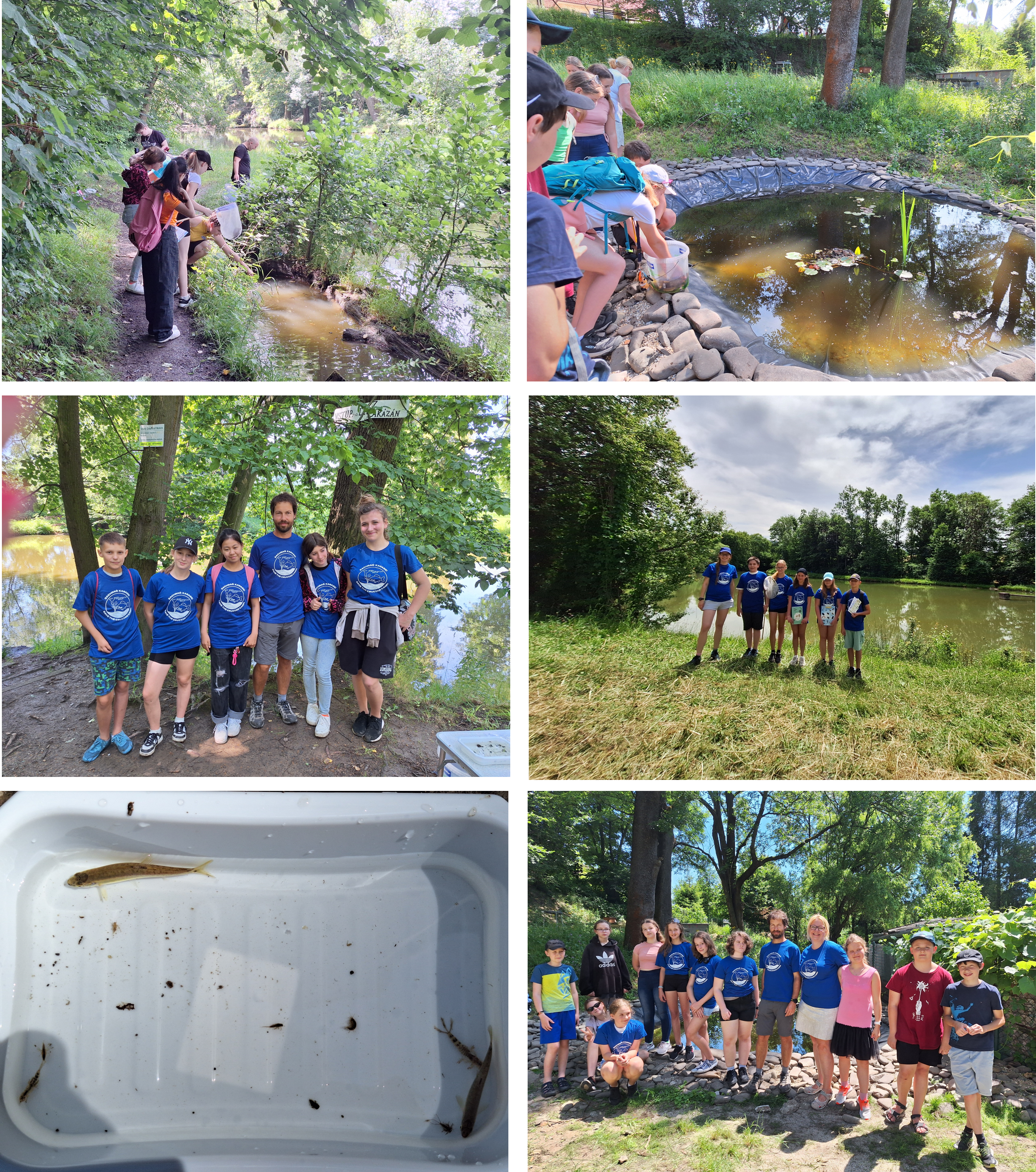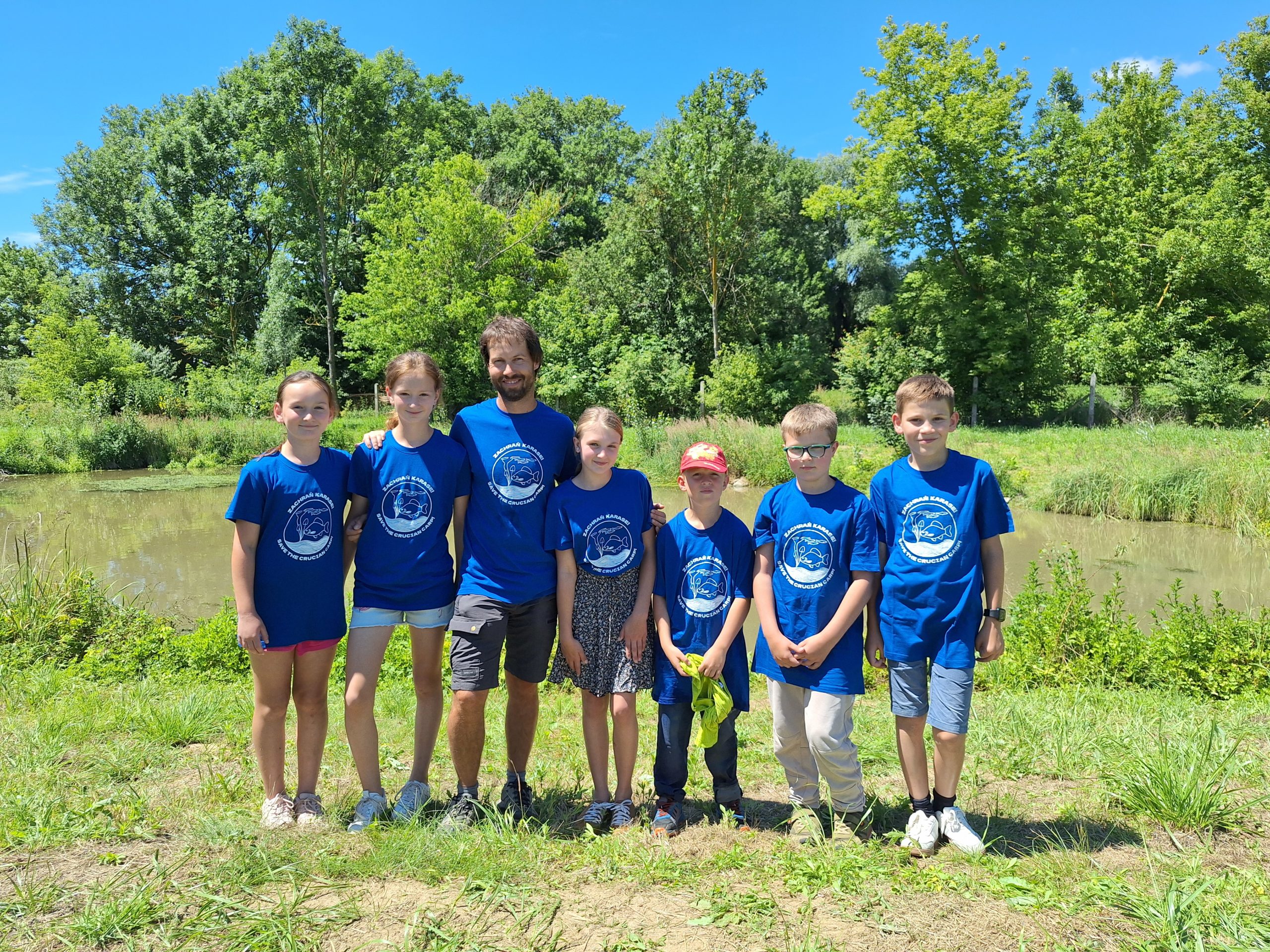In the first part of the project "Involving youth in the conservation of critically endangered fish species within the framework of water retention measures in the landscape", teaching of theory of pupils from six primary schools took place in February 2024. Second grade pupils learned what biodiversity means and why it is important for our nature and addressed its decline with an emphasis on freshwater ecosystems. The children also learned how to identify invasive fish species and know their impact on our native fish species, focusing on the critically endangered crucian carp and sunbleak. They learned how these species can be protected and how biodiversity can be supported. In the practical part, pupils learned to make food webs using magnets depicting species living in the pond.
The second part took place in June 2024. Pupils from the same primary schools took part in a field exercise and biodiversity mapping around the schools. Each class was given a monitoring kit (i.e. a backpack filled with the tools needed for monitoring) and a "Hunting Day" worksheet. Pupils were tasked with finding the animals and plants living there and using identification keys to correctly identify them. This task was a competition and the winning team won T-shirts with the project logo. The pupils really enjoyed this exercise and had the opportunity to gain a positive attitude towards biodiversity conservation.
Repatriations of the crucian carp (and also sunbleak in the case of one primary school ) were carried out at selected sites in the vicinity of schools. Most schools have built their own pond on their property for this purpose. Other suitable sites in the vicinity of the schools have also been identified for the introduction of the crucian carp, as well as sites where crucian carps are already present. Pupils joined in through measuring and weighing the fish and had the opportunity to get involved in the management of the sites.



